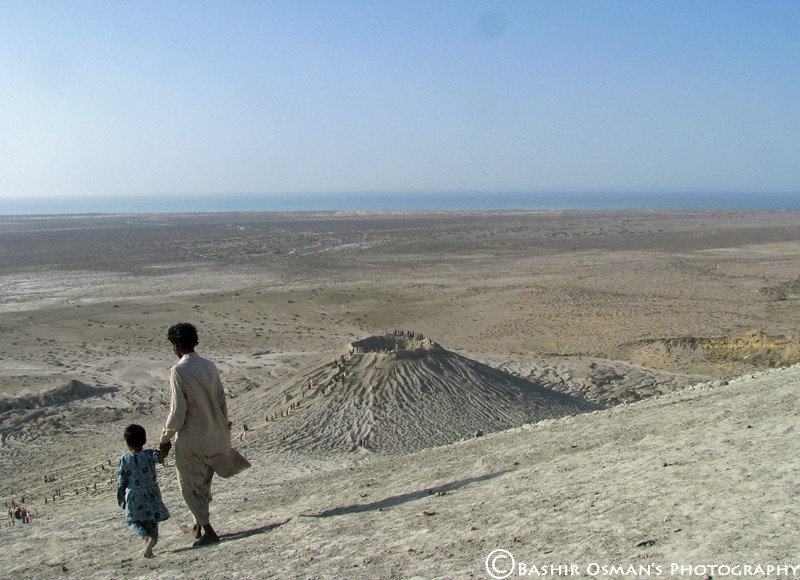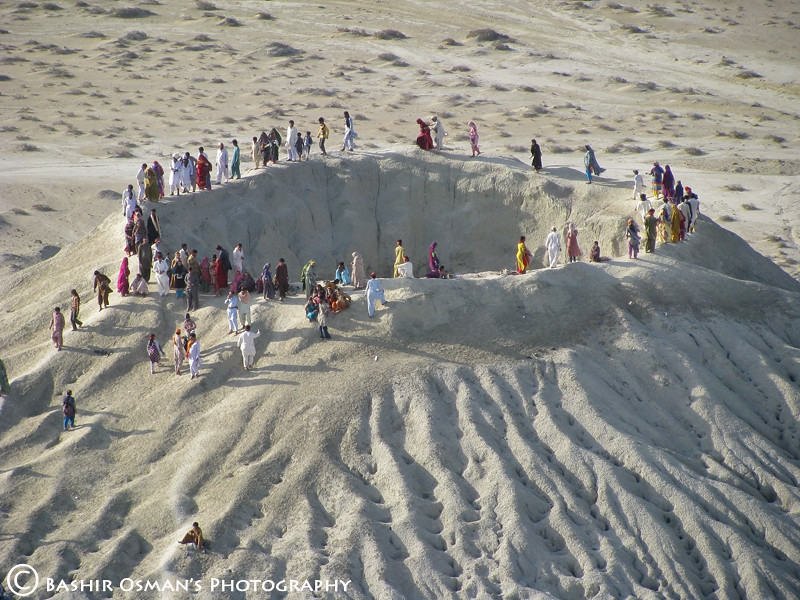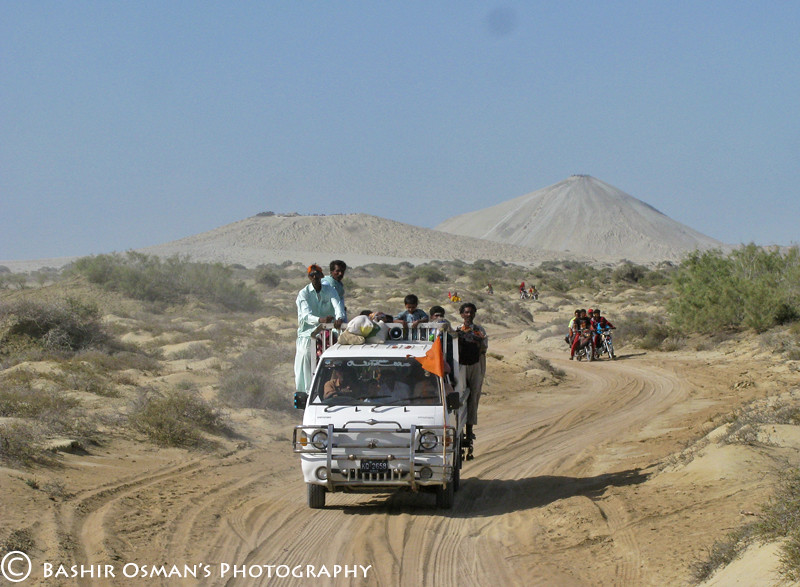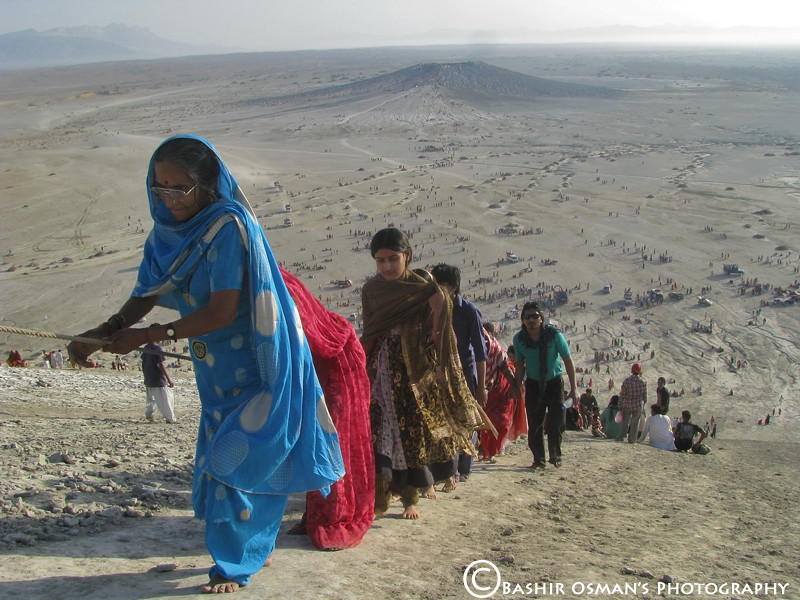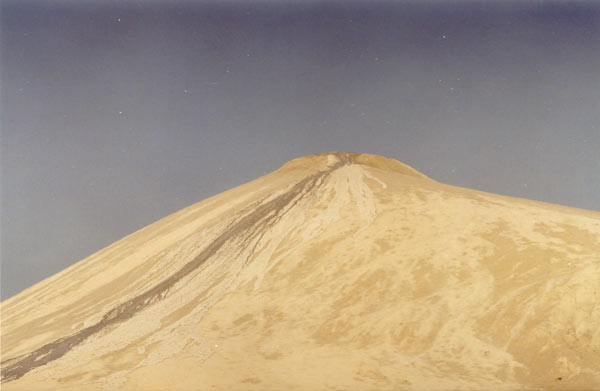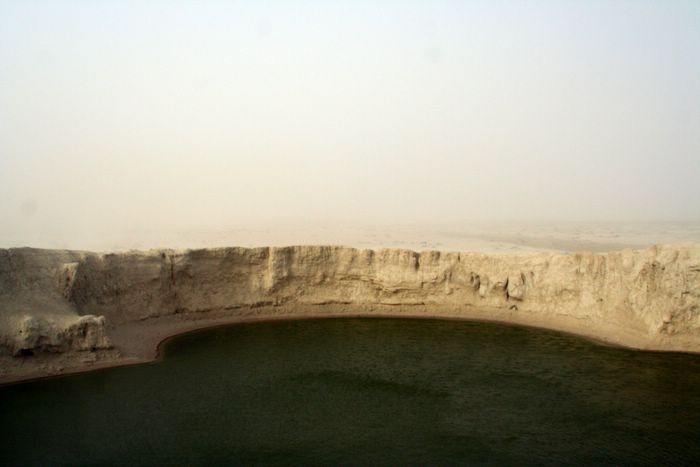Mud Volcanoes of Balochistan
Pakistan is gifted with a diverse landscape. Among many geological wonders here, one big attraction is the presence of
18 mud volcanoes. Infact world's largest and highest known mud volcano is located in Balochistan. The altitiude of highest mud volcano here is
300 ft. The mud volcanoes of Balochistan are not only located on the land but from time to time they appear as small temporary islands in the Arabian Sea also.
To reach the most famous group of these mud volcanoes, one has to travel west of Karachi on the
Makran Coastal Highway (N10). One has to drive upto a place called
Aghor located at the delta of
Hungol River. 7 mud volcanoes are located few kilometers North East of Aghor.
11 mud volcanoes are located further west between
Kutch and
Gwadar.
There are two known groups of mud volcanoes here. One is called
'Chandargup' and other is called
'Jabl-ul-Ghurab'. Very close to Chandargup is an ancient Hindu temple called
'Hinglaj temple' or 'Nani Temple'. Due to close proximity of the mud volcano to a Hindu temple, it is very likely that the word Chandargup is actually derived from the word
'Chandargupt'. Another word which locally mentions this group of volcanoes is
'Chandra coop' which means
Volcanoes of the Moon.
It is said that mud volcanoes have roots that go several kilometers underground and act as safety valves for high underground pressure.
The earliest account of the presence of mud volcanoes in Balochistan dates back to
1840. In 1862
Major (later Sir) Frederick John Goldsmid was employed by the Governer of Bombay for special missions. One such mission was a foray into Makran lasting from
December 12, 1861 to January 1862. Goldsmid and his party commenced their journey overland from Karachi and wrote a diary of their travels upto Gwadar. This travelogue writes about the mud volcanoes, which gives the first detailed account of their existence. In his journal Goldsmid writes about passing through bubbling springs near
Ras Koocheri, taking detours to see ancient Hindu temples of Hinglaj and the mud volcanoes near
Ormara. The Hindus worship these mud volcanoes as the habitation of a deity
Babhaknath.
It is reported that during the infamous 8.1 intensity earthquake of Balochistan which occured on
May 31, 1935 a mud volcano erupted Northwest of Quetta, near the town of Surab and kept spewing out mud for 9 hours continuously.
It is also reported that on
November 28, 1945 an earthquake of 7.8 intensity occured in Arabian Sea off the coast of Makran.
The earthquake caused a tsunami with a wave reaching as high as 13m at some places. This tsunami killed 4000 people off the coast of Arabian Sea in Sindh and Baluchistan. Widespread destruction was reported in the towns of
Pasni and
Ormara.
A village called
Khaddi got completely wiped off the face of earth with no survivors. Even in Karachi, waves rose several feet through Clifton and Gizri. Sea water entered the compounds of oil storage facilities at Kimari harbor in Karachi. The underwater cable link which existed in 1945 between Karachi and Muscat was interrupted. The
Cape Monze lighthouse, 72 km from Karachi, was damaged. The quake was also strongly felt at Manora Island near Karachi Harbour. The 94–feet–high
lighthouse on Manora was damaged and a couple of pounds of mercury spilt.
This earthquake shook and vented the mud volcanoes of Hungol so much that the gases coming out of this volcanoes got ignited and flames rose several hundred feet in the air.
The news of fiery volcanoes erupting in Balochistan (1945) spread across India. There were also reports from RAF aircraft flying in from the west of volcanic eruptions in Lasbela State in Balochistan. So one
Peter Martin–Kaye who was stationed at Korangi Creek Royal Air Force Flying Boat base and his friend Peter Woolf, who was also stationed at the Korangi Creek base, took two weeks leave from the base commander and set off on the
2nd of December, 1945 on an expedition along the Makran Coast on camels provided by the
Wazir of Lasbela State to check out what had happened when the earthquake and tsunami struck. On reaching the location of three active mud volcanoes (which they called
Chandragup, Ranagup and Rajagup), concluded that the quake had released a quantity of gas at that location which had ignited in a fiery eruption giving rise to the stories of volcanic eruptions.
Another account of these eruption come from
V.P. Sondhi, who in
1947 also wrote in about the same volcanic phenomenon in the area near the mouth of the Hungol River in Baluchistan following the 1945 quake. According to Sondhi, the self-igniting plume of gas had erupted:
“with such great force that the flames leaped thousands of feet high into the sky”.
These off shore mud volcanoes didn't live long and the strong wave action of Arabian Sea dissolved the muddy islands within months. By the end of
1946 these mud volcanoes were completely gone.
The geological research says that the mud volcanoes emerging out of Arabian Sea are made from highly viscous mud with high gas content. The mud gets driven up by high buoyancy forces and over time, a high mud ridge or mountain forms out of the water.
A scientist named
G. Delisle had described in
2002 the emergence of a new mud volcano island in
March 1999 at about the same place, this time apparently not accompanied by an earthquake, but it was also destroyed by wave action a few months later.
Mud volcanoes are generally not considered to be dangerous. In some countries like Azerbaijan which has the largest concentration of mud volcanoes in the world, the gas eruptions from mud volcanoes are more frequent and violent than those in Pakistan, they are actually a tourist attraction. Should Pakistan do the same?
With the opening of
N10 - Makran Coastal Highway in 2004, mud volcanoes of Balochistan are now within few hours reach from Karachi. The convenience of a world class highway is also bringing a constant stream of 'city slickers' to this once remote area. People are now climbing onto these sandy volcanoes in large numbers. Some preservation should be provided to these natural wonders otherwise the onslaught of tourist will deface the natural beauty.
Tourism should be allowed but within safe distance of these sandy monuments. I also recommend a visit to these volcanoes and not to mention the joy of travel on scenic Coastal Highway, which deserves a full post on its scenic route alone.
COURTESY TO OWAIS MUGHAL
Courtesy @
pkpatriotic
http://www.defence.pk/forums/members-club/15825-mud-volcanoes-balochistan.html



























